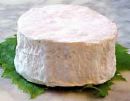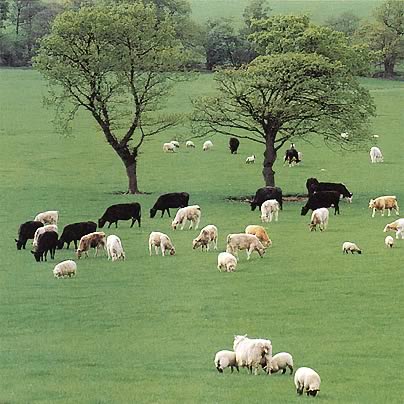Homage to Fromage - Stilton
Jean Anthelme Brillat-Savarin
 An attorney, author and the foremost authority in the seventeenth century on ďthe physiology of tasteĒ, which was, not surprisingly, the title of his most well known book.
An attorney, author and the foremost authority in the seventeenth century on ďthe physiology of tasteĒ, which was, not surprisingly, the title of his most well known book.Published only months before his death. It consists of 8 volumes and its full title is 'The Physiology of Taste,
 or Meditation on Transcendent Gastronomy, a Work Theoretical, Historical, and Programmed.'
or Meditation on Transcendent Gastronomy, a Work Theoretical, Historical, and Programmed.'There are few recipes but many anecdotes and observations covering all aspects of the pleasures of the table. He was quite possibly the greatest food critic ever.He was among the first to write seriously about eating and the art of the table.
In recognition of his accomplishments, a cheese, an omelet, a salmon dish, a garnish, and a consommť all bear his name.
An avid cheese lover, Brillat-Savarin remarked, "Dinner without cheese is like a beautiful woman with only one eye."
He also quipped ,ďTell me what you eat and I will tell you what you are.Ē
God bless the crazy ones!
 Yoga askets, move over. Plump hedonists, you as well. Lush and limber at once is not only possible, but a way of life. At least in the world of cheese.
Yoga askets, move over. Plump hedonists, you as well. Lush and limber at once is not only possible, but a way of life. At least in the world of cheese.
Brillat Savarin, named after the very first French kitchen magician and philosopher, Jean Anthelme Brillat Savarin (see side bar), is the most buttery, rich, decadently delicious cheese one can imagine.
 Think butter that has been out of the fridge for several hours; ready to be enjoyed just with the help of your finger. The velvety white mold rind that distinguishes this cheese from pure butter just makes it more interesting. It also adds another dimension of aroma, texture and flavor not found in its simpler sibling.
Think butter that has been out of the fridge for several hours; ready to be enjoyed just with the help of your finger. The velvety white mold rind that distinguishes this cheese from pure butter just makes it more interesting. It also adds another dimension of aroma, texture and flavor not found in its simpler sibling.
 The cheese was created in the 1930s by cheesemaker Henri AndrouŽt and is produced all year round, mainly in Normandy. It comes in wheels, 6-7 inches in diameter and approximately 2 inches thick, and is aged for one to two weeks. It is also available as a fresh cheese (non affine) that resembles rich cream cheese.
The cheese was created in the 1930s by cheesemaker Henri AndrouŽt and is produced all year round, mainly in Normandy. It comes in wheels, 6-7 inches in diameter and approximately 2 inches thick, and is aged for one to two weeks. It is also available as a fresh cheese (non affine) that resembles rich cream cheese.
Triple cream cheeses are babies of the 'after war' era, when the the future suddenly looked great. At that time, after years of rationing, everybody became optimistic and French cheese makers became crazy enough to use cream as an enhancement for their little rounds.
 Well, God bless the crazy ones! The cream makes the fat content of such cheeses jump to a level of at least 75% (everything dairy with 80% or more is called butter...). It then makes for cheeses that are not only delicious, but also very versatile, or limber.
Well, God bless the crazy ones! The cream makes the fat content of such cheeses jump to a level of at least 75% (everything dairy with 80% or more is called butter...). It then makes for cheeses that are not only delicious, but also very versatile, or limber.
Other phenomenal hand crafted triple cream cheeses include; Pierre Robert, Gratte Paille, Bourguignon and, from Sanoma, Picolo. St.Andre belongs to the same category and is better known, although it is a mass produced rather unbalanced wheel of heaviness.
It's no secret that fat is the most efficient flavor bearer. So, more fat means more flavor. Triple creams therefore seem to simply adjust to whatever you are serving them with or whatever you are spreading them on. Cut one open horizontally and sandwich it with smoked salmon. Delicious!  Go green and serve a little pesto on the side. Surprising! You can even tickle your sweet tooth and dip a sliver in some juicy rasberry compote. Amazing!
Go green and serve a little pesto on the side. Surprising! You can even tickle your sweet tooth and dip a sliver in some juicy rasberry compote. Amazing!
Lush? Oh yes! Limber? Absoltuely! Worth the little madness? Definately!

Speaking of Cheese...
By Caroline HostettlerSome Like It Hot!

Up for a day on the boat? Combining dadís fishing trip with a family picnic? Planning a lazy day at the beach? Whatever youíre up to, cheese will add the perfect little zing to any outdoor feast, as long as you know which ones to pick and which ones to avoid.
Bring...
Robust cheeses like aged Gouda, Parmigiano, Sbrinz, spanish sheep milk wheels, Manchego, Roncal, Zamorano. Mountain cheeses are also a great choice; Gruyere, Bra Duro, Tomme díAbondance, Pleasant Ridge. Italian Pecorinos like the ones from Tuscany, Rome, Sardegna or Sicily area few more excellent selections.
In other words: Hard, dry cheeses that originally were produced in order to conserve milk. These guys are sturdy and humble at once. They survived months or even years in dark cellars, without refrigeration. So for them a day in the sun will (literally) feel like a day at the beach!
 Blue Cheeses also work well as long as they are not the creamy ones such as perfectly aged Gorgonzola Dolce, Montbriac or some other runny New Age inventions. Cheeses like Stilton, Shropshire, Cabrales, Roquefort, Gorgonzola Piccante, Blu del Moncenisio, Bleu de Gex, Blue Goat, Valdeon, etc. are known to appear very dry and compact and on the palate to develop only slowly into a creamy delight. This profile makes them ideal. If they shed a crumb here or there... simply pick it up. Thatís how you eat them anyway.
Blue Cheeses also work well as long as they are not the creamy ones such as perfectly aged Gorgonzola Dolce, Montbriac or some other runny New Age inventions. Cheeses like Stilton, Shropshire, Cabrales, Roquefort, Gorgonzola Piccante, Blu del Moncenisio, Bleu de Gex, Blue Goat, Valdeon, etc. are known to appear very dry and compact and on the palate to develop only slowly into a creamy delight. This profile makes them ideal. If they shed a crumb here or there... simply pick it up. Thatís how you eat them anyway.Semi and aged goat milk cheeses. They taste light and citrusy and fizzy and thus are perfect on a hot day. Their great feature is that they are dry, lean and complex enough to not become messy. And donít forget the great excuse they offer to open a Champagne!
Leave at home...
White mold rind products such as Bries, Camemberts, Tomme Vaudoise, Brillat Savarin, Fougerus, Robiolas, Nevat, etc. Once cut open, and this happens fast because they are good, the paste will start thinning up and running out while the rind and its edge will dry out very quickly. Not pleasant for the eyes nor the tastebuds.
If you canít survive a day without white mold (and I donít blame you) put those cheeses into a dish and enjoy them by the spoon. Or opt for the few ones that are sold in a little ceramic dish like St.Marcelin or St. Felicien.
Washed rind cheeses. Donít be fooled by the idea that the cheeses known as the 'stinky ones' will be easier to keep company in an open surrounding. The warm air makes them even more fragrant, more runny and more messy. Keep the Epoisses, Chueflada, delicate Tommette Ubriaco, Azeitao, Reblochon, Ardrahan, Chimay and Co. at home. After all, you will need something to celebrate the day once you return there!
Caroline...


